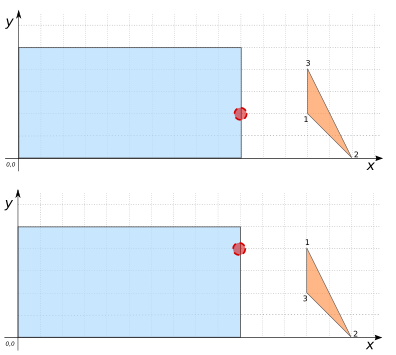ST_ClosestPoint
Signature
POINT ST_ClosestPoint(GEOMETRY geomA, GEOMETRY geomB);Description
Returns the point of geomA closest to geomB using 2D distances
(z-coordinates are ignored).
What if the closest point is not unique?
Then the first one found is returned.
The point returned depends on the order of the Geometry's coordinates.
Examples
| geomA Point | geomB Polygon |
|---|---|
| POINT(4 8) | LINESTRING(1 2, 3 6, 5 7, 4 1) |
SELECT ST_ClosestPoint(geomA, geomB);
-- Answer: POINT(4 8)
SELECT ST_ClosestPoint(geomB, geomA);
-- Answer: POINT(4.6 6.8)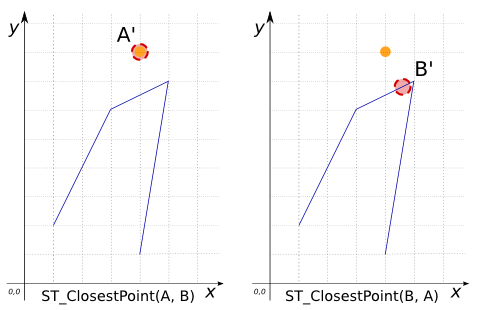
SELECT ST_ClosestPoint('POLYGON((0 0, 10 0, 10 5, 0 5, 0 0))',
'POINT(4 2)');
-- Answer: POINT(4 2)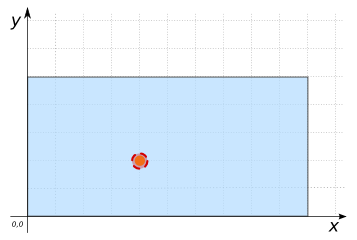
SELECT ST_ClosestPoint('POLYGON((0 0, 10 0, 10 5, 0 5, 0 0))',
'POINT(5 7)');
-- Answer: POINT(5 5)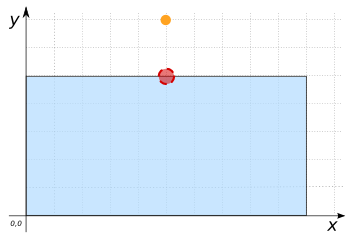
-- This example shows that the POINT returned by ST_ClosestPoint
-- depends on the orientations of Geometries A and B. If they have the
-- same orientation, the POINT returned is the first POINT found in A.
-- If they have opposite orientation, the POINT returned is the POINT
-- of A closest to the first POINT found in B.
SELECT ST_ClosestPoint('LINESTRING(1 1, 1 5))',
'LINESTRING(2 1, 2 5))') A,
ST_ClosestPoint('LINESTRING(1 1, 1 5))',
'LINESTRING(2 5, 2 1))') B;
-- Answer:
-- | A | B |
-- |-------------|-------------|
-- | POINT(1 1) | POINT(1 5) |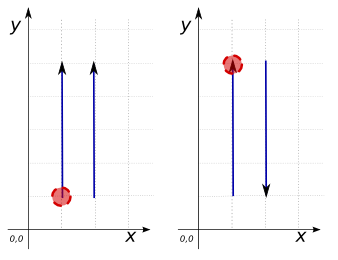
-- In this example, there are infinitely many closest points, but
-- ST_ClosestPoint returns the first one it finds. The POLYGON listed
-- as the second parameter remains the same, but its coordinates are
-- listed in a different order.
SELECT ST_ClosestPoint('POLYGON((0 0, 10 0, 10 5, 0 5, 0 0))',
'POLYGON((13 2, 15 0, 13 4, 13 2))') A,
ST_ClosestPoint('POLYGON((0 0, 10 0, 10 5, 0 5, 0 0))',
'POLYGON((13 4, 13 2, 15 0, 13 4))') B;
-- Answer:
-- | A | B |
-- |--------------|--------------|
-- | POINT(10 2) | POINT(10 4) |